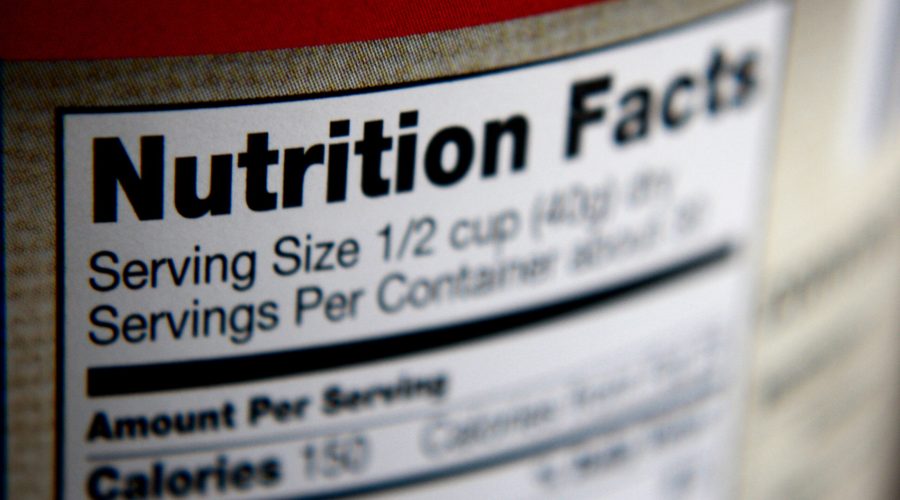Welcome to a journey that will transform the way you view food! In the bustling aisles of grocery stores and amidst the tempting array of packaged foods, understanding the enigmatic language of the nutrition facts label is your passport to making healthy choices. In this dynamic guide, we unravel the mysteries behind those tiny numbers and percentages, empowering you to make informed decisions about what you eat.
Embarking on the path of nutritious living isn’t just about counting calories; it’s about deciphering the story that every nutrition label tells. We believe that knowledge is the key to making mindful food choices, choices that fuel your body, mind, and spirit. So, buckle up as we explore the world of nutrition labels, revealing the secrets that will enable you to embark on a journey toward a healthier, happier you. Get ready to decode, digest, and delve into the art of making healthy choices starting right at the heart of every packaged product: the nutrition facts label.
Nutrition Labels
Nutrition labels are like a treasure map, providing valuable information about the contents of packaged foods. These labels are your gateway to understanding the nutritional value and potential health implications of what you’re about to consume. By deciphering these labels, you can navigate the supermarket aisles with confidence and prioritize foods that contribute positively to your health.
Understanding the Nutrition Facts Label
Serving Size and Servings per Container
Serving sizes are standardized to make it easier to compare similar foods; they are offered in common units, such as cups or pieces, followed by the metric amount, e.g., the number of grams (g). The serving size indicates the amount of food or drink that most individuals consume. It does not suggest how much you should eat or drink.
Take note of the serving size, as well as the number of servings in the food packaging. For example, you might wonder if you’re eating 1/2 servings, 1 serving, or more.
The servings per container tell you how many servings are in the package. This information is crucial as many packages contain multiple servings, and consuming more can lead to excess calorie intake.
Calories
Calories provide a measure of how much energy you get from a serving of this food.
Remember that the number of servings you eat impacts the quantity of calories you consume. Overeating calories per day has been linked to overweight and obesity.
Nutrients
Macronutrients
The macronutrient breakdown includes the amount of carbohydrates, fats, and proteins. You can use the label to support your personal dietary needs; look for foods that have more of the nutrients you want to consume more of and less of the nutrients you want to avoid.
Attention:
- Nutrients to get less of: Saturated Fat, Sodium, and Added Sugars.
These nutrients listed on the label are the ones associated with adverse health effects. So it’s important for us to limit the consumption of foods high in these nutrients!
- Nutrients to get more of: Dietary Fiber, Vitamin D, Calcium, Iron, and Potassium.
Eating a high-fiber diet can increase bowel frequency, lower blood glucose and cholesterol levels, and lower calorie consumption. Vitamin D, calcium, iron, and potassium-rich diets help lower the risk of developing osteoporosis, anemia, and high blood pressure.
Difference between Total Sugar and Added Sugar
Total Sugars include sugars naturally present in many nutritious foods and beverages, such as sugar in milk and fruit as well as any added sugars that may be present in the product.
Added Sugars include sugars that are added during the processing of foods (such as sucrose or dextrose), foods packaged as sweeteners (such as table sugar), sugars from syrups and honey, and sugars from concentrated fruit or vegetable juices.
- Any product that contains milk (such as yogurt, milk, or cream) or fruit (fresh, dried) contains some natural sugars.
Nutrient Daily Values
The Percent Daily Value (%DV) provides an estimate of how much a nutrient in a serving contributes to your daily diet. Aim for a lower %DV for nutrients like saturated fats, sodium, and added sugars, and a higher %DV for nutrients like fiber, vitamins, and minerals.
General Guide to %DV
- 5% DV or less of a nutrient per serving is considered low
- 20% DV or more of a nutrient per serving is considered high

Making Healthier Choices
- Check the Ingredients: The ingredient list reveals what’s actually in the food. Choose products with recognizable, whole-food ingredients and avoid those with excessive additives, preservatives, and artificial flavors.
- Mindful of Added Sugars: Added sugars can hide under various names like high-fructose corn syrup, cane sugar, and more. It is definitely true that added sugar contains empty calories. There are no nutrients in it, other than sugar. As a result, basing your diet on products high in added sugar may contribute to nutrient deficiencies. Opt for products with minimal added sugars and prioritize natural sources like fruits.
- Fiber and Whole Grains: Look for products high in dietary fiber and whole grains, as they contribute to a balanced diet and better digestive health.
Even with all the information about nutrition facts, you still struggle to choose the healthier options for consumption, take a look at GoCoCo. With it, you can detect unhealthy ultra-processed food in the palm of your hand.
Conclusion
Knowing how to decode nutrition facts empowers you to make informed choices that align with your health goals. By understanding serving sizes, calorie counts, macronutrients, and daily values, you can select foods that contribute positively to your overall well-being. As you embark on your journey towards a healthier lifestyle, remember that knowledge is your greatest tool for making lasting dietary improvements. So, next time you pick up a packaged product, take a moment to decode its nutrition label and pave the way for a healthier you.
FAQ
Yes, labels can be deceptive. Phrases like “low fat” might mean high sugar. Scrutinize ingredients; natural sugars are healthier than added ones. Beware of terms like “natural” – they aren’t always synonymous with healthy.
Check for aliases of sugar, like high fructose corn syrup, in the ingredients list. Also, inspect for words ending in “-ose,” indicating various sugar forms. Awareness is your best defense against hidden sugars.
Organic products minimize pesticide exposure, but they aren’t a guarantee of superior nutrition. Focus on a balanced diet; organic or not, diverse nutrients are essential. Wash fruits and vegetables thoroughly to reduce pesticide residues.
Ingredient lists divulge a product’s essence. If unpronounceable items abound, it’s overly processed. Opt for items with recognizable, simple ingredients. Whole foods trump processed counterparts for a healthier lifestyle.
Related Topics
- Mindful Indulgence: Dive into the essence of mindful indulgence, its benefits, and how you can incorporate it into your life for a more balanced and fulfilling existence.
- Healthy Snacking on the Road: Learn about nutritious snack options that provide sustained energy during your travels and complement your fitness routine.




